The Ultimate Guide to Things To Do in London
London is the United Kingdom’s capital city, with a long and illustrious history dating back to Roman times. As such, London is distinctly British albeit different from other British cities. There are nods to Britain’s imperial past, with African, Indian, and Asian influences, but it also embraces the future. Literally every nation is represented, and many people not born in London still identify themselves as Londoners.
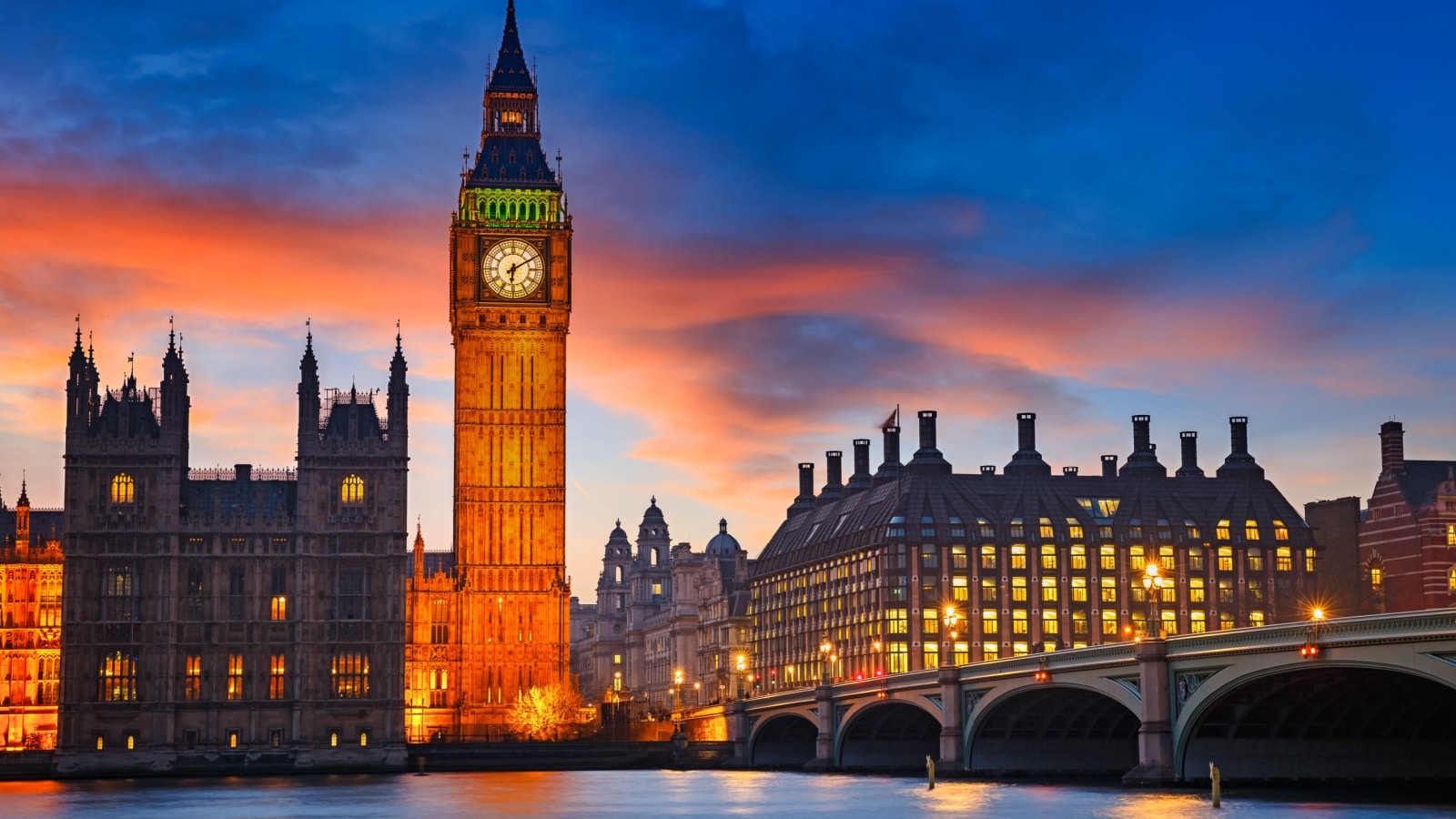
Your Guide to the Best Things To Do in London
London also sits at the geographic crossroads between the US and Europe and is a popular transit destination, making its airports some of the busiest in the world. In addition, London is a tourism and business destination in its own right, welcoming millions of visitors annually. One can enjoy a weekend blast or a two-week stay in equal proportion and still come away wanting more. Here are some top picks for things to do in London, written by an ex-London resident.
West London
West London, stretching west past Park Lane and encompassing the boroughs of Kensington and Chelsea, Hammersmith and Fulham, and parts of the City of Westminster, is the epitome of effortless sophistication. It has always been more affluent than other parts of the city, with its grand architecture, parks, boutiques, and museums, and is decidedly the premium option for visiting London.
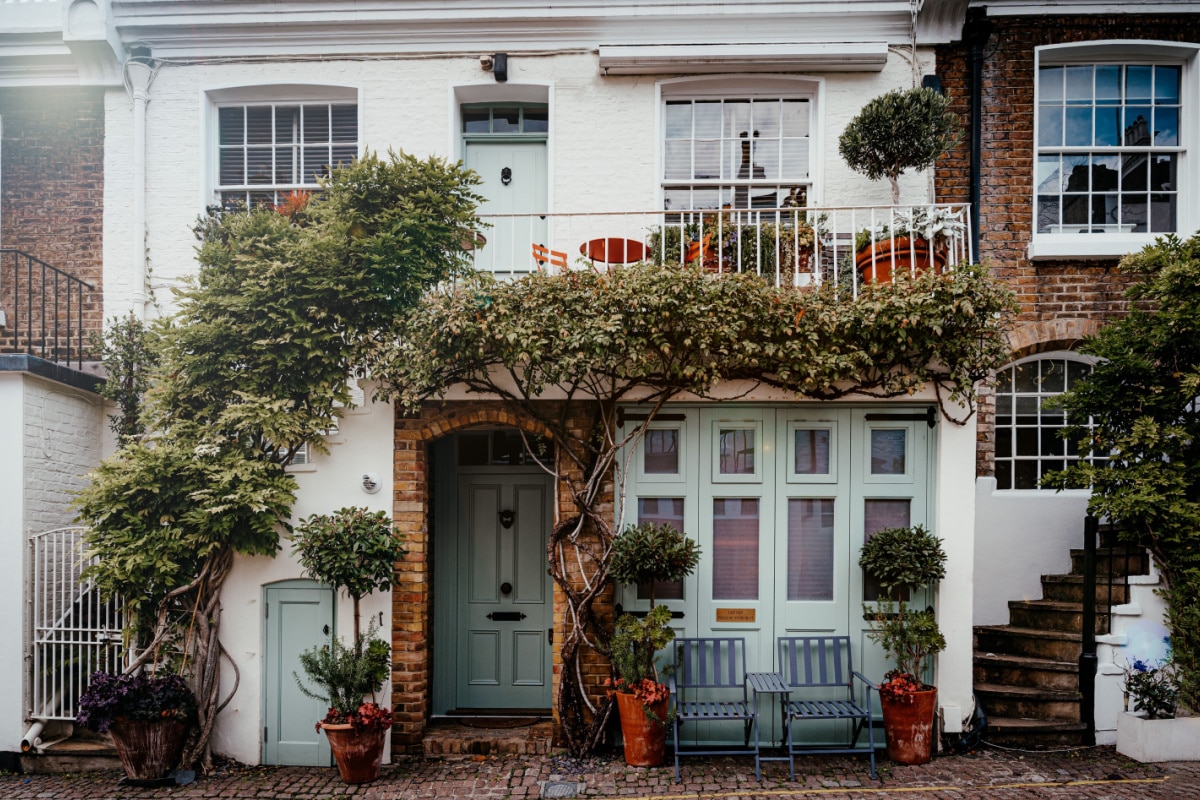
Knightsbridge
Knightsbridge is arguably the most exclusive and desirable area in all of London, with visitors flocking from all over the world. Knightsbridge is defined by its exclusive garden squares with Edwardian townhouses costing tens of millions of dollars, beautiful rows of red-brick houses, luxury shopping boutiques, and its proximity to Hyde Park.
The Royal Albert Hall is also found on the borders between Kensington and Knightsbridge, which, besides being an architectural marvel, plays host to many events.
Knightsbridge is home to some of the most expensive real estate in the UK. A penthouse at One Hyde Park is the most expensive apartment in London and the 45-room palace at 2-8A Rutland Gate is the most expensive private residence ever sold. Knightsbridge has a distinctly Middle Eastern flavor, supercars with Arabic number plates parading around the neighborhood, and Qatar’s sovereign wealth fund owning Harrods and large swathes of the area.
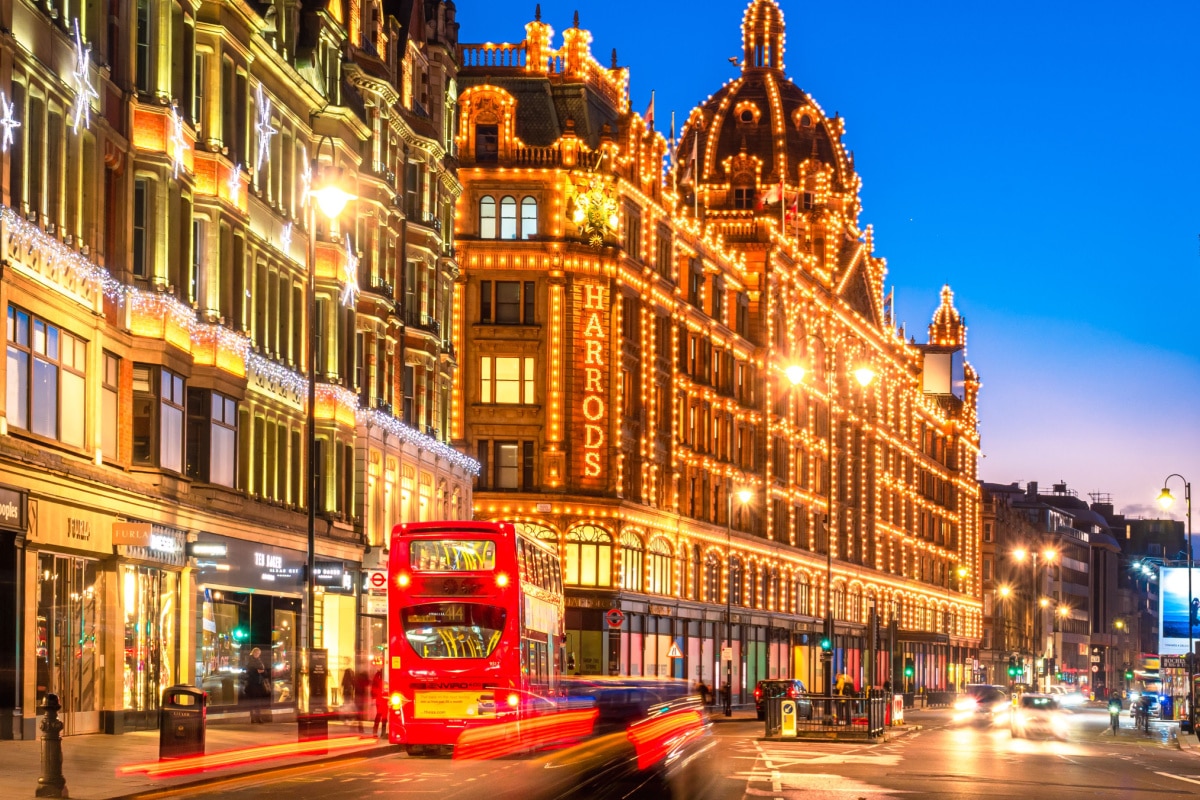
Harrods
A visit to Knightsbridge is not complete without stopping in at the ultraluxe department store, Harrods, not least because the underground station has a direct link to the store itself.
Harrods was founded in 1849 and is undoubtedly a London institution that sells all kinds of goods. The outside of the building is handsome and can be described as the jewel of Old Brompton Road. The ornate interior is a genuinely breathtaking exercise in attention to detail.
When visiting, look out for the shrine to the late Princess Diana and Dodi Fayed, the plethora of cafes, and the Food Halls. One might even spot the resident hawks used to control the pigeon population.
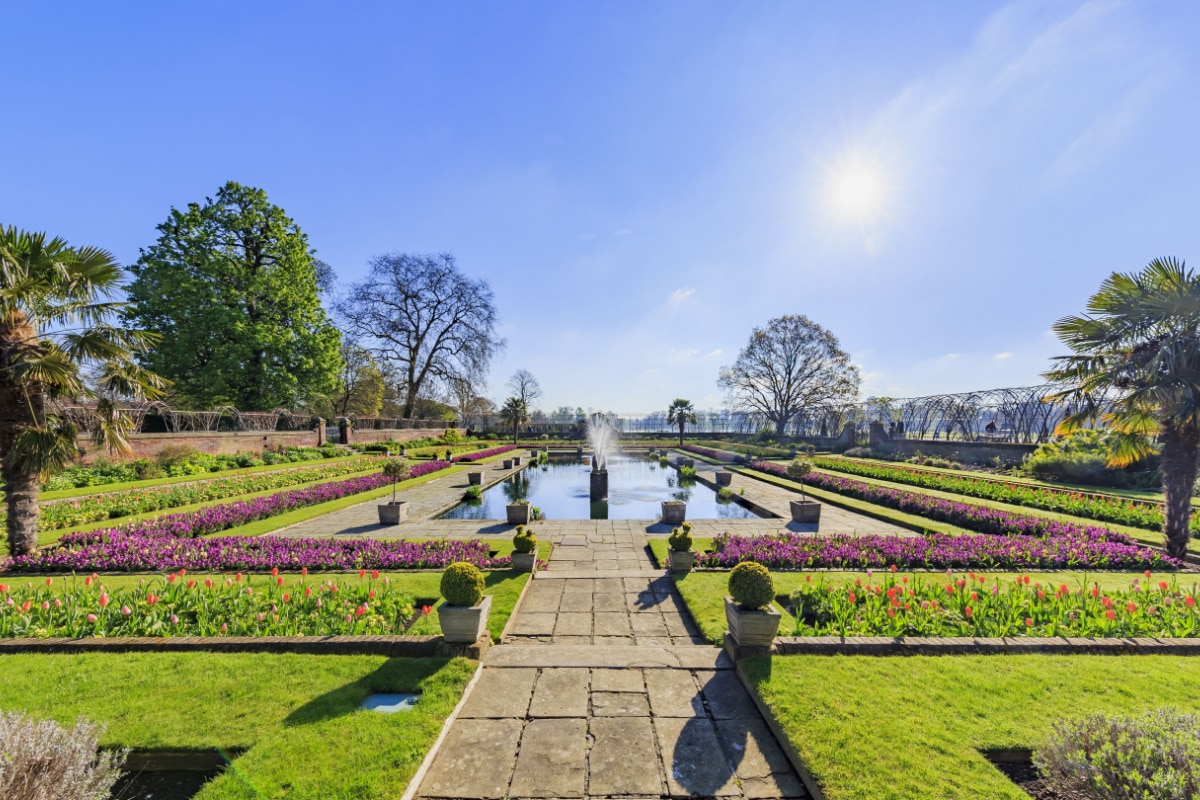
Hyde Park
Hyde Park is to London as Central Park is to New York—an oasis of calm in the city’s constant hustle and bustle. The 350-acre public park is between Mayfair and Knightsbridge, enjoying manicured gardens, a lake, wooded areas, and grassy knolls.
On a warm spring day, the park is glorious, and revelers can be seen lazing around on the grass to contemplate the serenity of the day. There are also frequent events like concerts, public installations, and the annual Winter Wonderland.
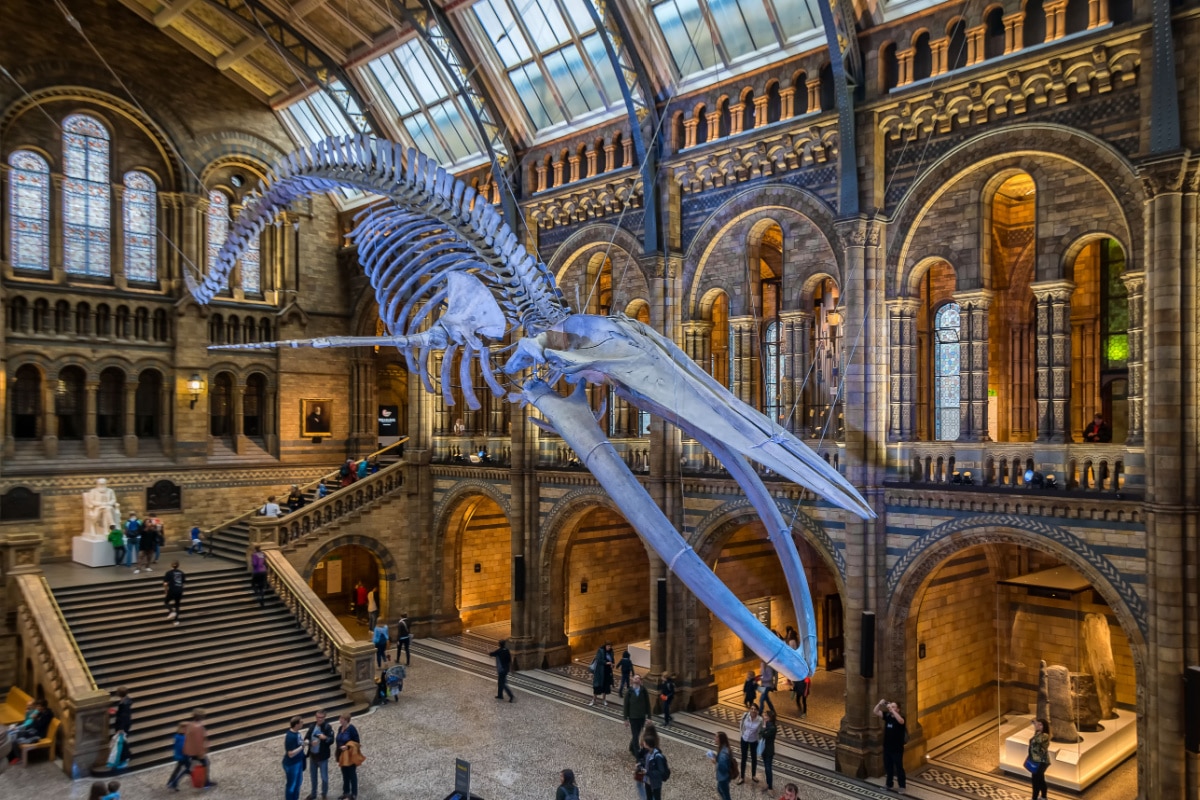
Natural History Museum
Located in the museum area of South Kensington, the Natural History Museum is a stunning Victorian building that hosts many of Britain and the world’s natural treasures, including the museum’s most famous resident, Dippy, the Diplodocus dinosaur skeleton.
Initially opened in 1881, the museum has a mind-bending collection of more than 80 million. It is difficult to overstate how big the museum is, and one could spend a whole day there enjoying all the exhibits at a leisurely pace. Since its construction, the Geological Museum and the Darwin Centre have been incorporated into the museum and contain several permanent and temporary installations.
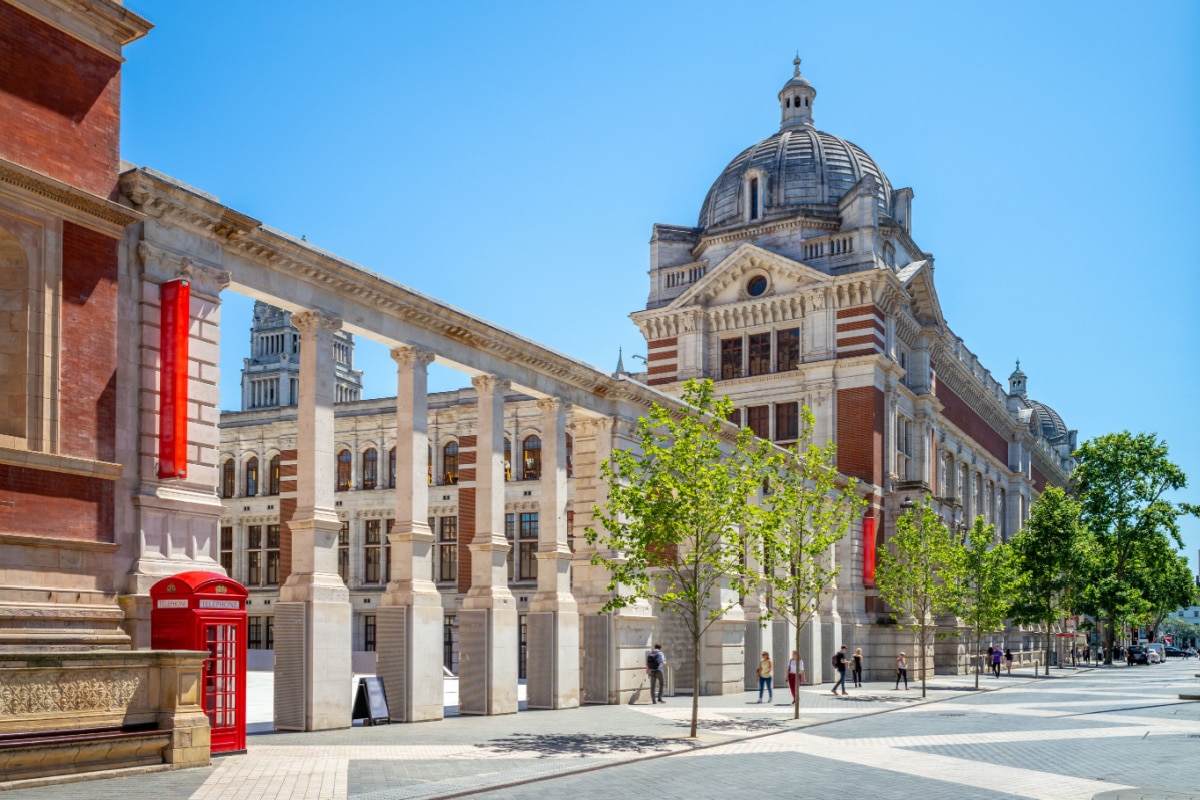
Victoria and Albert Museum
A stone’s throw from the Natural History Museum is the Victoria and Albert Museum, affectionately known as the ‘V&A’—named after Queen Victoria and Prince Albert—and is the world’s largest art and design museum.
It was founded in 1852 and is equidistant from both South Kensington station and Knightsbridge station. Containing 145 galleries, it covers a staggering 12.5 acres. The V&A is home to over 2 million pieces and many permanent and temporary exhibitions and events.
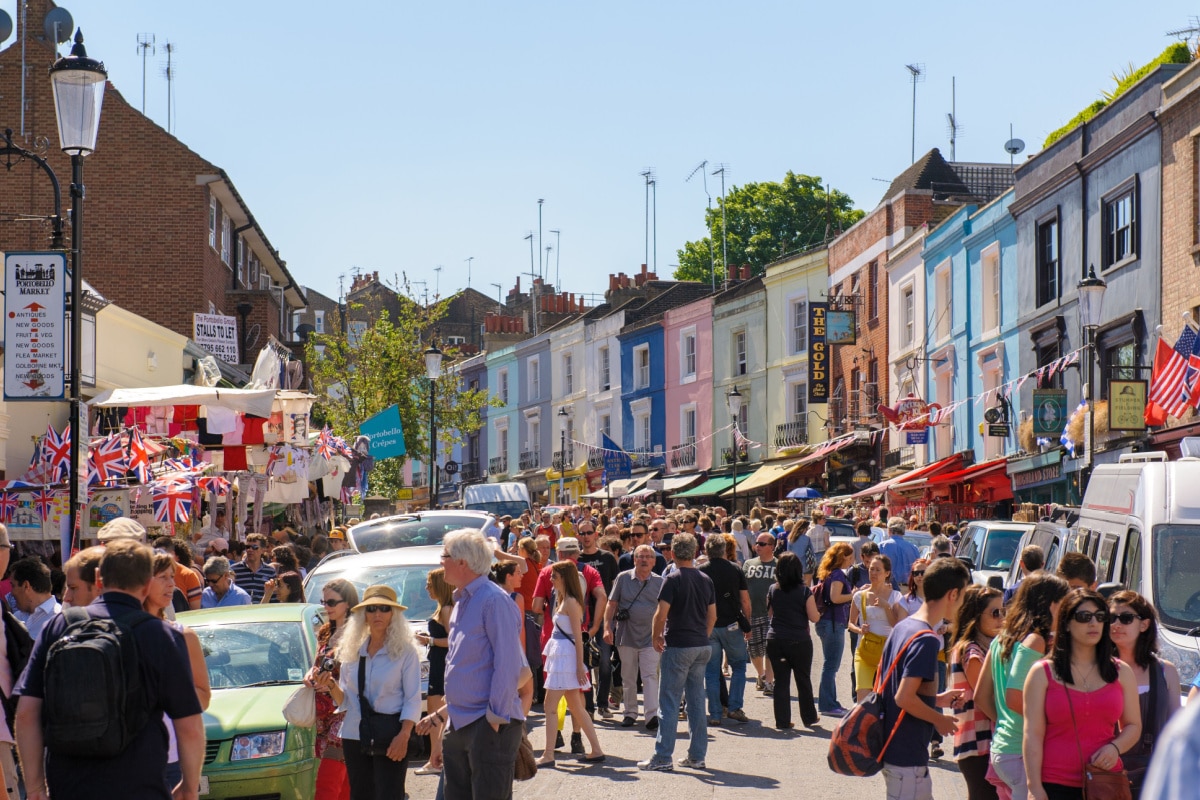
Notting Hill – Portobello Road Market
Notting Hill was arguably thrust into the limelight with the 1990s Hugh Grant film of the same name. However, this West London neighborhood has been a lively epicenter for decades.
Notting Hill is known for two main things—the Carnival and Portobello Road market.
The now world-famous Carnival grew out of the post-war arrival of Caribbean migrants to the area, who brought their traditions with them. It is a celebration of food, pageantry, and dancing and typically runs in August.
On the other hand, the Portobello Road Market is, in essence, a flea market, but to call it that does not do justice to the experience. Antique shops, art galleries, and clothes stalls spill into the streets. A food market also draws on many world cuisines to deliver a lovely day out.
Outside London
Paradoxically, London is characterized not only by what can be found in London itself but also by what is outside London. These visits serve two purposes: to break up the city’s constant stimulation and to show people what life outside of the city is like.
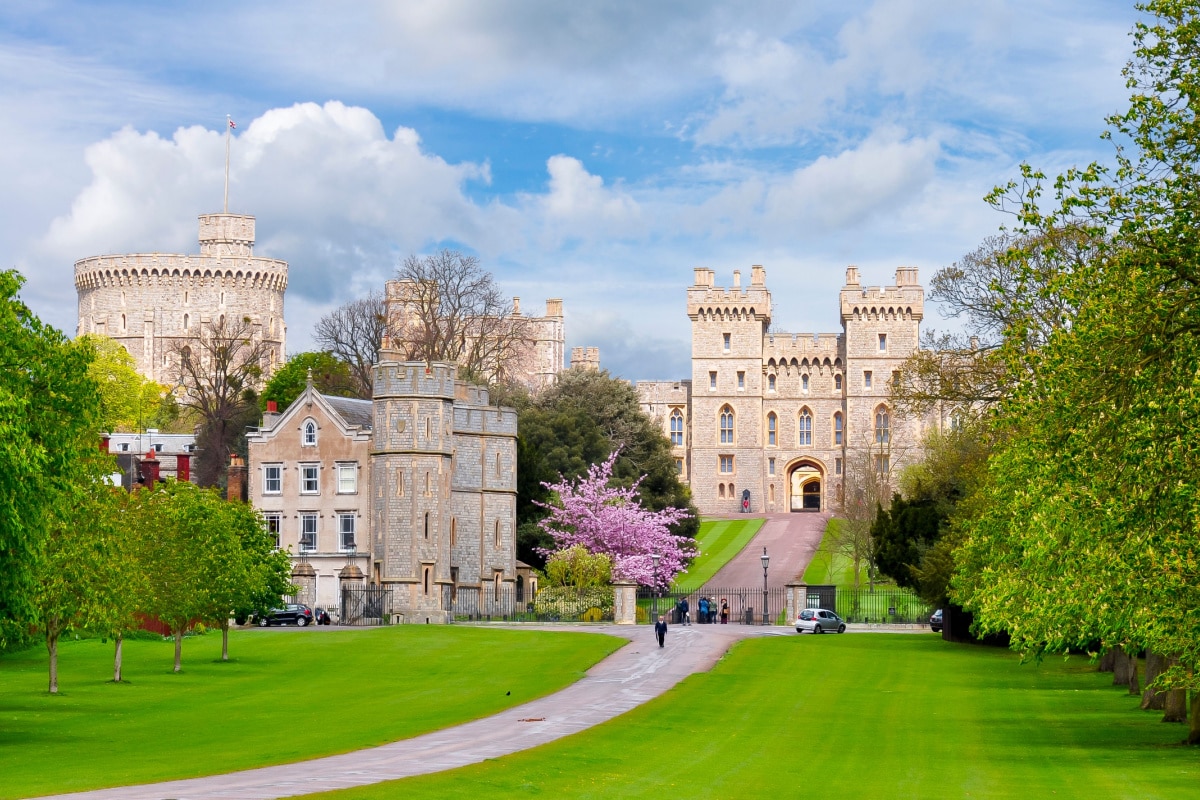
Windsor Castle
Windsor is a pleasant satellite town outside of London in Berkshire. It is home to two leading institutions – Eton School, the factory of the country’s wealthy and connected ruling class, and Windsor Castle, a royal residence.
Windsor Castle’s history stretches back almost a thousand years and is the royal residence that lends its name to the current royal family. With the original castle being constructed during the reign of William the Conqueror and hosting every royal family since then, it is famous for its various architectural styles, from Georgian to Gothic and everything in between.
The castle also hosts royal apartments, chapels, other historic buildings, and the fabled gardens home to ‘The Long Walk’—a more than 2.5-mile tree-lined avenue leading to the castle gates.
Hampton Court Palace
While still technically inside London, Hampton Court Palace is far enough outside the city to feel like a different world. The palace at Hampton Court is synonymous with the Tudor dynasty, notably its most famous monarchs, Henry VIII, Elizabeth I, and ‘Bloody Mary.’
While not as old as Windsor Castle, ‘only’ dating back to the 1500s, and not an ‘in use’ royal residence like the former, Hampton Court is still a lovely day out. Accessible by train from Waterloo Station, the palace is characterized by its predominantly red-brick exterior and beautiful architecture, vast gardens, and collections of royal memorabilia.
Harry Potter Studio Tour
For Harry Potter fans, big and small, one of the best things to do in London is visit Warner Brothers Studios. The studios themselves are deep outside of London in Watford, with the nearest station being Watford Junction with direct services from London Euston (and not sadly Platform 9 ¾ from King’s Cross station).
While the only disappointment is that the train is a standard commuter train and not the Hogwarts Express, the Studio Tour is highly rated and hugely popular. Since its opening in 2012, it has welcomed up to six thousand visitors per day.
The site was used to film all the Harry Potter films and several notable Warner Bros productions. The tour can take 3 ½ hours and has been expanded to include several new features, for example, the Forbidden Forest and Gringotts Wizarding Bank.
Central London
It should be noted that Central London is a bit of a misnomer—the city is a vast sprawl and is relatively decentralized in that sense, so this refers to the central part of the city, which is approximately bounded by the river Thames to the south, Hyde Park and Park Lane to the west, King’s Cross station in the north, and Covent Garden in the East. That being said, Central London is a shopping, cultural, and historic center and spans plenty of noteworthy areas, including Mayfair, Covent Garden, Soho, Piccadilly Circus, Oxford Street, and many others.
St James’s Park
Located between Mayfair and Westminster, St James’s Park is one of several public parks in London. Notably, St James’s is unique due in part to its lake and verdant walkways, which give respite to the rush of the city, but also due to its central location.
Indeed, the park is surrounded by London institutions—Buckingham Palace and the Mall, Green Park, St James’s Place, Trafalgar Square, and several government offices, including the iconic 10 Downing Street, residences of the Prime Minister.
Westminster Abbey, Elizabeth Tower & Big Ben, Houses of Parliament
All are helpfully located in the same area of the City of Westminster. Westminster Abbey, Elizabeth Tower, and the Houses of Parliament are examples of London’s historic gothic architecture.
There was some form of Benedictine abbey on the site of the present church for some years before the construction of the original church in 1066, which has since been the site of several royal weddings, burials, and coronations. The Gothic church began construction in 1376, and as a symbol of London and the Church of England, it was designated as a UNESCO World Heritage site in 1987.
The Palace of Westminster, commonly called the Houses of Parliament, was initially constructed as a royal palace in the eleventh century. After a series of fires, the current Gothic revival palace was constructed in 1840. The Palace of Westminster is home to both the House of Commons and the House of Lords.
Elizabeth Tower is the clock tower found in the northern part of the palace and is often referred to as Big Ben (although, strictly speaking, this refers to the bell itself). The bell weighs over 13 tons and is one of the best-known London landmarks.
The British Museum
Located in the Bloomsbury area of London, closest to the Holborn, Tottenham Court Road, Russell Square, and Goodge Street tube stations, the British Museum is an enormous museum celebrating two million years of human history.
Aside from the large number of galleries and exhibits, the museum is breathtaking in its scale and can easily take at least a half day to tour appropriately. As an aside, the ‘British’ moniker is a bit of a misnomer as the museum draws its exhibits from across the world, including some pieces (such as the Parthenon frieze, ‘borrowed’ from the Acropolis in Athens) which are subject to international disputes between countries.
Covent Garden
Covent Garden is an entertainment and cultural hub in London’s West End, centered around a former produce market site, now hosting several boutique shops and restaurants. The area teems with buskers and tourists visiting attractions like the Royal Opera House, the British Transport Museum, and Neal’s Yard.
Of note, Covent Garden is home to possibly London’s most awkward tube station, located only a few hundred meters away from either Holborn or Leicester Square stations. It is frequently overcrowded and difficult to access, with the platforms accessible only by elevator or a 193-step spiral staircase.
Leicester Square, Soho
Leicester Square (pronounced “Lester” Square) hosts many theaters and cinemas, as well as London’s historic Chinatown, with various authentic Chinese and Cantonese restaurants and shops. Besides Chinatown, the rest of the experience is admittedly a bit kitsch, particularly around the main square, which plays host to M&M World.
On the other hand, Soho is artsy and grungy. It used to be part of London’s underworld with seedy shops and nightclubs, but it is now much more tame and is also the center of the LGBTQ scene in London.
Piccadilly Circus
Piccadilly Circus is a busy intersection between Mayfair, Regent’s Street, Leicester Square, and Soho. While not quite Shibuya Crossing in Tokyo, Piccadilly has a wonderful crazy vibe, with billboards lighting up the streets and buskers entertaining crowds of people often spilling into the street.
Trafalgar Square, National Portrait Gallery
Trafalgar Square in the City of Westminster is a public square commemorating the British’s victory over the French at the Battle of Trafalgar in 1805 during the Napoleonic Wars. The square is famous for its statues, fountain, and Nelson’s Column, a large doric monument commemorating Horatio Nelson’s victory at the Battle of Trafalgar.
Also sitting on the square is the National Gallery, home to over 220,000 art pieces. It is free to enter.
Camden Market, Camden Town
Camden Town is a locality in north-central London that straddles the Regent’s Canal, which snakes its way through London. Camden is a grungy and artsy location, with vintage shops selling musical paraphernalia, clothes, and anything in between.
Camden Town converges at Camden Market, previously the site of a dock and stables that used to store goods arriving by the canal. It is now home to a food market selling all sorts of delectable treats and weird and wonderful shops like Cyberdog, selling all sorts of party stuff.
Madame Tussaud’s
Nestled in the upmarket neighborhood of Marylebone (“Mar-lee-bun”), Madame Tussaud’s has been a London institution since 1835! For the uninitiated, this wax sculpture museum displays some incredibly lifelike wax likenesses of celebrities, sports stars, and politicians.
Located close to Baker Street station, the museum is not too far from the actual home of the fictitious Arthur Conan Doyle character, Sherlock Holmes, at 221b Baker Street.
Churchill War Rooms
Comprising both the Cabinet War Rooms and the Churchill Museum close to the Foreign and Commonwealth Office in Westminster, under the auspices of the Imperial War Museum, the Churchill War Rooms had become the nerve center of the Allied resistance to the Axis war machine during World War II. The War Rooms show what life would have been like during the Blitz in London and commemorate Winston Churchill’s leadership during the war.
Afternoon Tea at the Ritz
Nothing is more quintessentially British than the London institution, the Ritz Hotel in Mayfair, overlooking Green Park. The Ritz, a symbol of opulence and grandeur, upholds the time-honored tradition of afternoon tea in the Palm Court. Tea is not just tea here but also comes with champagne, scones, clotted cream, teacakes, and finely cut sandwiches.
Buckingham Palace, Changing of the Guard, Horse Guard Parade
Buckingham Palace is another royal residence in London and the seat of the monarchy. It was acquired by the royal family during the 1700s and was styled as the ‘Queen’s House’ before becoming a royal residence upon the ascension of Queen Victoria in 1837. It is also a sizable building with 775 rooms, including 188 staff bedrooms, 52 principal bedrooms, a post office, a swimming pool, and a jewelry workshop.
While many visitors go in the hope of spotting the reigning monarch, the main attractions are the Changing of the Guard, an elaborate ceremony in which the palace guards change shifts, and the Horse Guard Parade, a parade ground in St James’s Park in which the annual Trooping of the Colors takes place.
East London and the City of London
With so much happening in the West End and West London, it is sometimes easy to forget that London (the city) is distinct from the City of London—the site of the original Roman settlement.
The City has a character all unto itself and can often seem at odds with itself – its architecture can be both ultra-modern and classical; its feel can be both quaintness and grandeur; there are instances of both grungy and unkempt streets alongside manicured buildings and gardens.
Love it or hate it, the City is difficult to be indifferent to.
London Bridge, Tower Bridge
For the longest time, London Bridge was the sole crossing of the Thames, and it was initially constructed of timber when the Romans settled Londinium. The bridge has since been rebuilt several times, most recently in 1973 when American Robert McCulloch bought the existing bridge for approximately $2.5 million, allegedly under the assumption that this was, in fact, Tower Bridge.
To address an important point, when many visitors think of London Bridge, they visualize Tower Bridge. London Bridge is a fairly innocuous-looking thoroughfare, with several lanes of traffic going in either direction. It connects the Monument area of the city, famous for its Monument to the Great Fire of London of 1666, with the London Bridge train station complex, which includes London’s most famous skyscraper, the Shard.
On the other hand, Tower Bridge is the last bridge constructed over the Thames, close to the Tower of London, giving it its name. It is another example of neo-gothic architecture, with two Elizabeth Tower-esque towers with a drawbridge. When it was opened in 1894, it was an engineering marvel and marked the gateway to London for goods arriving by ship.
Tower of London
The Tower of London is a historic castle founded around 1066 by the conquering Normans. It was a royal residence until the Tudor dynasty, after which the royal family moved to Hampton Court Palace. Located on Tower Hill at the edge of the City of London, the Tower has played many vital roles in its history. It has been the treasury, an armory, and the home of the Crown Jewels. The castle is supposedly home to the ghost of Anne Boleyn and the fabled ravens—if they vacate the castle, it will mark the kingdom’s fall.
Shoreditch and Brick Lane
Nestled between Liverpool Street, Aldgate, and Whitechapel, Shoreditch has historically been an economically deprived area of London, playing host to London’s lower classes, socialists, Jewish communities, and new migrants from Europe and the sub-continent.
Consequently, the area has been a hotbed of community activities—markets, shops, and sensational food options. Revelers who frequent clubs in the area can enjoy the grungy atmosphere, indulge in some of the best South Asian food in the city, and also pop in for a late-night beer.
The City of London
As previously mentioned, the City of London is its own thing—it has its own police force, mayor, and laws. Unsurprisingly, the City within a city is an entirely different beast from the rest of London.
For one thing, the City is dripping in history. In juxtaposed to the skyscrapers and office blocks are the remains of the Roman wall and historical monuments and buildings. Within spitting distance of each other are the Bank of England, the Royal Exchange, and Sir Christopher Wren’s St Paul’s Cathedral reconstructed in neoclassical grandeur with some lovely stained glass windows after the Great Fire of London in 1666.
The City’s skyline is also one of a kind, dominated by the plethora of tall new buildings that have sprouted out of the ground in the past years.
Canary Wharf, reminiscent of New York City and previously a disused port facility, has been turned into a temple of finance. The City has followed suit, with buildings like the Gherkin (30 St Mary’s Axe), the Cheesegrater (the Leadenhall Building), and the Shard (the tallest building in Western Europe). Further east is the Heron (Milton Court), and the Walkie Talkie (20 Fenchurch Street). The latter is known for two things – one is allegedly melting a car with reflections of the sun from the building, and the other is the Sky Garden, the highest public garden in the city (make sure to book tickets online in advance!).
Columbia Road Flower Market (Bethnal Green)
Relatively deep into East London, which is certainly much further than most visitors would ordinarily venture (other than to go to the Westfield shopping center at Stratford), is Bethnal Green’s Columbia Road. The flower market and the shops on Columbia Road in London’s East End burst into life every Sunday with an open-air street market. This market has certainly grown in popularity since the pandemic.
South of the River
Historically, some taxi drivers would shun the south side of the river, with it being considered a cultural wasteland at best, and a stab-happy playground for gangland at worst. Nowadays, gentrification has turned the south of the river (or parts of it, at least) into a yuppy’s playground, with historical attractions, promenades, and markets to entice most-comers. These are a few things to do in London south of the river.
River Cruise
A great way to see most of the riverside tourist spots is to take a dedicated river cruise. There are various ways to do this, from the elaborate bateaux mouches style river boats with dinner to a fast commuter boat, helpfully available on the Uber app. The latter is considered part of the public transport network, although it is fair to say it is not as widely used as the tube, train, or London’s ubiquitous red double-decker buses.
Borough Market
Borough (“Burra”) Market, at the southern terminus of London Bridge, is a large food market nestled under the raised tracks from London Bridge train station. The market is known for its fresh and artisanal produce (think fresh goose eggs and fancy mushrooms) and some terrific food stalls dishing up restaurant-grade paella, chorizo sarnies, and Indian food. If ever there was a foodie London bucket list, Borough Market would occupy a few top spots.
Borough Market is a good starting (or ending) point for a stroll along the South Bank of the River Thames. Nearby in fact is a replica of Shakespeare’s Globe Theatre before the first major stop.
The Tate Modern
Next on the walking tour is the Tate Modern, a modern art museum located at the former Bankside power station. The gallery is one of the largest modern art installations in the world, home to works from modern masters such as Picasso, Delaunay, and Monet.
The Tate is now a publicly administered group of collections but became known as the Tate Group after sugar magnate Sir Henry Tate funded the building of Millbank Gallery and donated his sizable collection of Victorian art to the foundation. The museum enjoys views of the City and St Paul’s Cathedral across the river, which is handily accessible by foot across the Millenium Bridge.
The South Bank and London Eye
Although all of the bank south of the River Thames is technically the ‘south bank,’ the South Bank proper spans the half-mile walking path across the river from Charing Cross, from the County Hall complex (home to London’s Aquarium) up to Blackfriar Bridge.
The crown jewel of the promenade is, of course, the London Eye, Europe’s tallest observation wheel, standing at 135 meters tall. If the waiting times and throngs of visitors prove to be too overwhelming, the South Bank often hosts events such as Christmas fairs and art installations, and there is a daily second-hand book fair to find those hidden treasures.
A skate park, graffiti park, the Royal Festival Hall, and the Hayward Gallery also provide entertainment for visitors, as does the IMAX cinema.
The Cutty Sark and Greenwich
Located across the river from the Isle of Dogs in East London, a fair distance downriver from central London, the leafy London suburb of Greenwich provides some respite from the bustle of the city. Greenwich is London’s historic home of its naval tradition, with the sprawling Maritime Museum, the old Naval College, and the restored Cutty Sark, one of the last tea clippers built before the advent of steamers made sailing ships defunct.
Greenwich Park also provides stunning vistas across the city. Further up the peninsula, one finds the O2 Arena, one of London’s largest event venues, and the Emirates Air Line, a funicular-style river crossing joining Greenwich with the revitalized Docklands area.
Imperial War Museum
Located at the site of the former Bethlem Hospital in Lambeth since 1936, the Imperial War Museum is intended to provide insight into modern conflicts since the Great War, in particular offering visitors a chance to experience the horrors of the trenches and see memorabilia from significant conflicts of the past century.
Crystal Palace Park
Crystal Palace Park is a 200-acre public park in South London, approximately 30-40 minutes by train from London Bridge. The name Crystal Palace refers to the now-destroyed Crystal Palace, a cast iron and glass structure constructed in 1851 to host the Great Exhibition to demonstrate the advances of the Industrial Revolution. It was a staggering 1851 feet long and 128 feet tall. The structure was relocated to south London following the Great Exhibition and was destroyed in a fire in 1936.
This article originally appeared on Wealth of Geeks.

